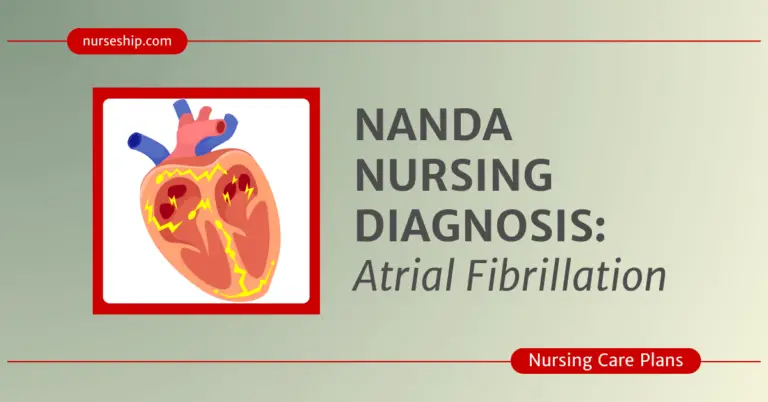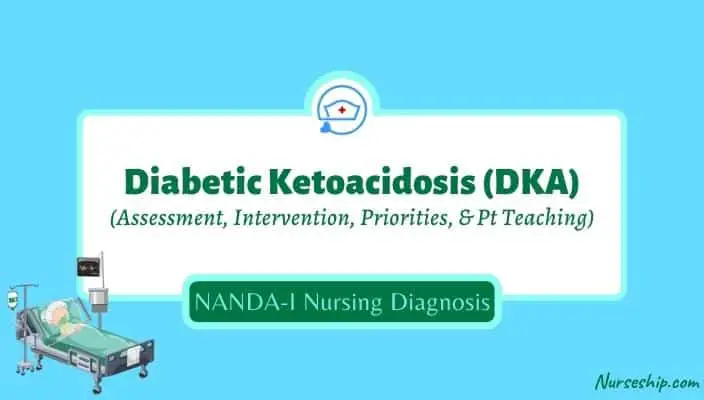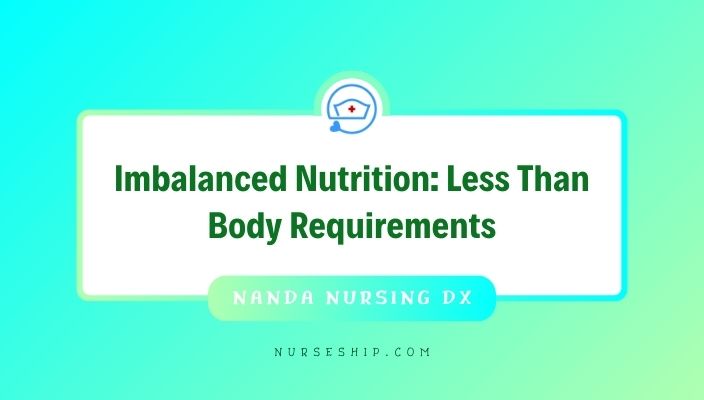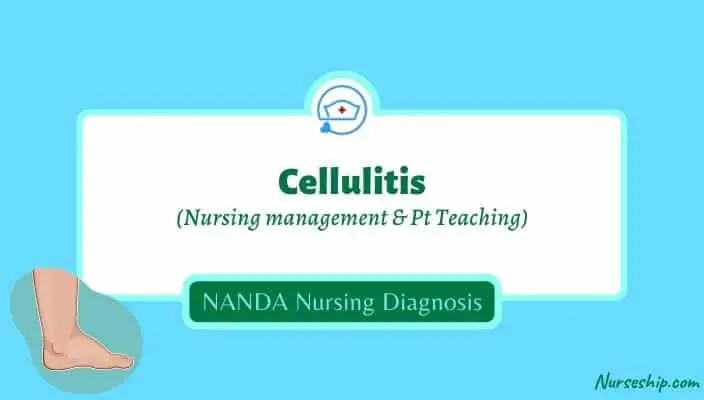This article includes 21 NANDA Nursing diagnosis for Atrial Fibrillation (abbreviated as Afib or AF).
For further insights, we encourage you to review the Atrial Fibrillation (AFib) Nursing Care Plan and Atrial Fibrillation (Afib) Study Guide.
These AFib Nursing diagnoses have been updated in alignment with the NANDA International Nursing Diagnoses: Definitions and Classification, 2024–2026 (13th Edition).
21 NANDA Nursing Diagnosis for Atrial Fibrillation
Following are 21 NANDA Nursing Diagnosis for AFib.
Note: The “Risk for” nursing diagnosis, does not include “evidenced by” statements as it identifies a potential problem that has not yet occurred. Only the risk factors (related factors) that are actually present in your specific patient should be included in the diagnosis.
1. AFib Nursing Diagnosis: Risk for Decreased Cardiac Output
Related to:
- Altered heart rate/rhythm (atrial fibrillation)
- Ineffective atrial contraction
- Reduced ventricular filling time
- Altered afterload
- Altered electrical conduction
- Treatment side effects (if applicable)
- Heart failure (if applicable)
- Electrolyte imbalance (if applicable)
- Structural heart defects (if applicable)
2. AFib Nursing Diagnosis: Risk for Ineffective Cerebral Tissue Perfusion
Related to:
- Irregular heart rate and rhythm (atrial fibrillation)
- Decreased cardiac output
- Treatment regimen (anticoagulation)
- History of cerebrovascular accident/TIA (if applicable)
- Hypertension (if applicable)
- Atherosclerotic disease (if applicable)
- Carotid artery disease (if applicable)
- Diabetes mellitus (if applicable)
- Advanced age (if applicable)
- Coagulopathy (if applicable)
3. AFib Nursing Diagnosis: Risk for Thrombosis
Related to:
- Abnormal blood flow (atrial fibrillation)
- Blood stasis in atria
- Hypercoagulability
- Age >60 years (if applicable)
- Decreased mobility (if applicable)
- History of previous thrombosis (if applicable)
- Vascular disease (if applicable)
- Obesity (if applicable)
- Hypertension (if applicable)
- Diabetes mellitus (if applicable)
- Heart failure (if applicable)
4. AFib Nursing Diagnosis: Risk for excessive bleeding
(Old Nursing Diagnosis: Risk for Bleeding)
Related to:
- Anticoagulation therapy
- Treatment regimen (rate/rhythm control medications)
- Coagulation defects (if applicable)
- History of previous bleeding (if applicable)
- Liver dysfunction (if applicable)
- Advanced age (if applicable)
- Concurrent use of antiplatelet agents (if applicable)
- Uncontrolled hypertension (if applicable)
- Concurrent medications that increase bleeding risk (NSAIDs, corticosteroids) (if applicable)
- History of falls (if applicable)
5. AFib Nursing Diagnosis: Acute Pain
Related to:
- Reduced myocardial oxygen supply (atrial fibrillation)
- Decreased cardiac output leading to tissue ischemia
- Inflammatory processes (if applicable)
- Emotional stress exacerbating physical symptoms (if applicable)
Evidenced by:
- Verbal reports of chest pain or discomfort (e.g., “It feels like a squeezing or pressure in my chest.”)
- Facial grimacing or guarding behaviors
- Increased heart rate or respiratory rate
- Restlessness or agitation
- Altered blood pressure (e.g., hypertension or hypotension)
- Observable limitation in physical activity due to pain
6. AFib Nursing Diagnosis: Risk for Imbalanced Blood Pressure
Related to:
- Irregular heart rate and rhythm (atrial fibrillation)
- Altered cardiac contractility
- Impaired ventricular filling
- History of hypertension (if applicable)
- Medication side effects (if applicable)
- Autonomic fluctuations
- Altered baroreceptor function
- Treatment regimen
See Also: Atrial Fibrillation (AFib) Nursing Care Plan
7. AFib Nursing Diagnosis: Ineffective Health Self-Management
Related to:
- Lack of knowledge about AFib management
- Complex medication regimen
- Forgetfulness in taking medications
- Inadequate social support
- Depression or anxiety affecting self-care
- Cognitive impairment
Evidenced by:
- Patient reports missing doses of medication
- Patient fails to monitor heart rate or rhythm
- Patient does not follow dietary sodium restrictions
- Patient misses scheduled follow-up appointments
- Patient reports difficulty in managing stress related to AFib symptoms
8. AFib Nursing Diagnosis: Excessive Fatigue Burden
Related to:
- Decreased cardiac output (atrial fibrillation)
- Altered heart rate and rhythm (atrial fibrillation)
- Inadequate oxygen delivery to tissues
- Emotional distress (if applicable)
- Sleep disturbances (if applicable)
- Side effects of medication (if applicable)
Evidenced by:
- Patient’s report of persistent tiredness or exhaustion
- Reduced Patient’s report of persistent tiredness or exhaustion
- Difficulty completing daily tasks
- Need for frequent rest periods during activities
- Observable physical exhaustion
- Reports of unrefreshing sleep
9. AFib Nursing Diagnosis: Risk for Impaired Cardiovascular Function
Related to:
- Altered heart rate and rhythm (Atrial Fibrillation)
- Ineffective atrial contraction
- Reduced ventricular filling time
- Increased cardiac workload
- Potential for heart failure
- Structural heart abnormalities (if applicable)
- History of cardiovascular disease (if applicable)
- Uncontrolled hypertension (if applicable)
- Electrolyte imbalances (if applicable)
- Medication side effects (if applicable)
10. AFib Nursing Diagnosis: Ineffective Peripheral Tissue Perfusion
Related to:
- Reduced cardiac output (atrial fibrillation)
- Altered oxygen transport to peripheral tissues
- Impaired blood flow due to irregular heart rhythm
- Atherosclerosis (if applicable)
- Vascular obstruction (if applicable)
- Medication side effects (if applicable)
Evidenced by:
- Cool, pale, or cyanotic skin in peripheral extremities
- Delayed capillary refill (>2 seconds)
- Weak, thready or absent peripheral pulses
- Intermittent claudication or pain in extremities during activity
- Patient reports of limb heaviness, cramping, or fatigue with activity
- Decreased sensation or numbness in affected areas
- Decreased skin temperature
- Reports of dizziness or lightheadedness upon standing
11. AFib Nursing Diagnosis: Risk for Ineffective Renal Perfusion
Related to:
- Decreased cardiac output (atrial fibrillation)
- Altered blood flow to the kidneys
- Hypotension (if applicable)
- Volume depletion (if applicable)
- Vascular abnormalities affecting renal arteries (if applicable)
- Medication side effects (e.g., diuretics or antihypertensives) (if applicable)
- Advanced age (if applicable)
- Risk of developing heart failure, leading to congestion and impaired perfusion.
12. AFib Nursing Diagnosis: Excessive Fear
(Old Nursing Diagnosis: Fear)
Related to:
- Unpredictability of Atrial Fibrillation and the potential for severe complications.
- Uncertainty about health status or prognosis (Afib)
- Knowledge deficit regarding atrial fibrillation and its management
- Anticipation of invasive procedures or treatment-related side effects
- Personal or family history of adverse health outcomes
- Perceived threat to well-being or life
- Potential for recurrent episodes of Atrial Fibrillation.
Evidenced by:
- Verbal expressions of concern or dread (e.g., “I’m afraid I might have a stroke.”)
- Observable tension or restlessness
- Increased heart rate or blood pressure or other physiological signs of stress during discussions about condition.
- Avoidance behaviors (e.g., skipping medical appointments or treatments)
- Difficulty concentrating or making decisions about care
- Verbal expressions of fear or anxiety
13. AFib Nursing Diagnosis: Risk for Acute Confusion
Related to:
- Decreased cerebral blood flow (atrial fibrillation)
- Hypoxia secondary to decreased cardiac output
- Electrolyte imbalances (hypokalemia, hypomagnesemia) (if applicable)
- Adverse effects of medications (e.g., anticoagulants, antiarrhythmics) (if applicable)
- Advanced age (if applicable)
- Pre-existing cognitive impairment (if applicable)
- Infection or systemic illness (if applicable)
14. AFib Nursing Diagnosis: Inadequate Health Knowledge
(Old Nursing Diagnosis: Deficient Knowledge / Knowledge Deficit)
Related to:
- Insufficient understanding of atrial fibrillation and its management
- Lack of exposure to educational resources
- Complexity of medical terminology or treatment regimen
- Inexperience with self-management strategies
- Cognitive or literacy barriers (if applicable)
- Emotional distress affecting learning (if applicable)
Evidenced by:
- Verbalized uncertainty about the condition or its implications (e.g., “I don’t really understand what atrial fibrillation means.”)
- Difficulty describing prescribed medications or their purpose
- Failure to recognize signs and symptoms requiring medical attention
- Misinterpretation or misuse of medical devices (e.g., blood pressure monitors)
- Poor adherence to prescribed dietary or exercise recommendations
- Repeated hospitalizations or emergency visits for preventable complications
15. AFib Nursing Diagnosis: Readiness for Enhanced Knowledge
Related to:
- Expressed interest in learning about AFib management
- Recognition of the need for better understanding of the condition and its treatment
- Desire to actively participate in care decisions
- Need for improved self-management skills
Evidenced by:
- Verbal expressions of willingness to learn (e.g., “I want to know more about managing my condition.”)
- Asking questions about atrial fibrillation, medications, or lifestyle modifications
- Demonstrating interest in educational materials or sessions
- Acknowledging the importance of adherence to treatment plans
16. AFib Nursing Diagnosis: Excessive Anxiety (Old ND: Anxiety)
Related to:
- Unpredictability of Atrial Fibrillation episodes
- Uncertainty about prognosis or treatment outcomes
- Perceived threat to health or life (e.g., risk of stroke or heart failure)
- Invasive procedures or treatment side effects
- Lack of knowledge about atrial fibrillation and its management
- History of anxiety or mental health conditions (if applicable)
- Emotional distress from living with a chronic condition
- Previous negative experiences with heart conditions
- Financial worries related to treatment costs
Evidenced by:
- Verbal expressions of worry or fear (e.g., “I’m scared I might have a stroke.”)
- Restlessness or agitation
- Difficulty concentrating or making decisions
- Increased heart rate or other physiological signs of stress
- Avoidance behaviors (e.g., reluctance to engage in treatment or follow-ups)
- Sleep disturbances (e.g., insomnia, difficulty staying asleep)
See Also: Atrial Fibrillation (Afib) Study Guide
17. AFib Nursing Diagnosis: Risk for Inadequate Nutritional Intake
(Old ND: Imbalanced Nutrition: Less than Body Requirements)
Related to:
- Fatigue and decreased appetite (atrial fibrillation)
- Increased metabolic demands due to irregular heart rhythm
- Difficulty preparing or consuming meals due to physical limitations (if applicable)
- Medication side effects (e.g., nausea, altered taste) (if applicable)
- Emotional distress impacting appetite (if applicable)
- Socioeconomic factors affecting access to nutritious food (if applicable)
18. AFib Nursing Diagnosis: Decreased Activity Tolerance or Risk for Decreased Activity Tolerance
(Old Nursing Diagnosis: Activity Intolerance)
Related to:
- Cardiac-pulmonary imbalance (atrial fibrillation)
- Decreased cardiac output
- Fatigue and reduced energy levels
- Impaired oxygen delivery to tissues
- Medication side effects (e.g., beta-blockers causing fatigue) (if applicable)
- Deconditioning or lack of physical activity (if applicable)
- Anemia (if applicable)
- Emotional distress (if applicable)
Evidenced by:
- Verbal reports of fatigue or exhaustion during physical activity
- Shortness of breath or dyspnea with exertion
- Elevated heart rate disproportionate to activity level
- Inability to complete activities of daily living (ADLs) without rest
- Observable physical weakness or fatigue during the assessment
19. AFib Nursing Diagnosis: Impaired Psychological Comfort (Old ND: Impaired Comfort)
Related to:
- Perceived threat to health or well-being (atrial fibrillation)
- Uncertainty about disease management or prognosis
- Emotional distress from living with a chronic condition
- Fear of invasive procedures or complications (e.g., stroke or heart failure)
- Disruption in usual routines or lifestyle changes
- Lack of adequate emotional or social support (if applicable)
Evidenced by:
- Verbal expressions of discomfort or unease (e.g., “I feel overwhelmed by all of this.”)
- Observable signs of restlessness or agitation
- Emotional withdrawal or reduced engagement in usual activities
- Difficulty concentrating or making decisions
- Altered sleep patterns (e.g., difficulty falling asleep, frequent awakenings)
- Physical manifestations of stress, such as tense posture or facial expressions
20. AFib Nursing Diagnosis: Risk for Adult Falls (Old ND: Risk for Falls)
Related to:
- Dizziness secondary to decreased cardiac output (atrial fibrillation)
- Irregular heart rate affecting balance and stability
- Side effects of medications (e.g., anticoagulants, beta-blockers causing hypotension) (if applicable)
- Fatigue or physical weakness
- Gait or mobility impairment (if applicable)
- History of previous falls (if applicable)
- Visual or sensory deficits (if applicable)
- Advanced age (if applicable)
21 AFib Nursing Diagnosis: Risk for Impaired Spiritual Well-Being
Related to:
- Challenges of living with a chronic illness (atrial fibrillation)
- Uncertainty about prognosis or future health outcomes
- Disruption in spiritual practices or rituals due to illness or treatment regimen
- Feelings of hopelessness or loss of purpose related to health changes
- Emotional distress or anxiety about the meaning of illness
- Lack of access to spiritual or religious support (if applicable)
- Social isolation or limited community involvement (if applicable)
Conclusion
This article has outlined 21 NANDA nursing diagnoses for atrial fibrillation (Afib), carefully updated to reflect the latest NANDA International guidelines.
For a deeper understanding, we encourage you to explore Atrial Fibrillation (Afib) Study Guide and review the sample Atrial Fibrillation (Afib) Nursing Care Plan.
Reference
NANDA International. (2024). NANDA International nursing diagnoses: Definitions and classification, 2024–2026 (13th ed.). Thieme.




